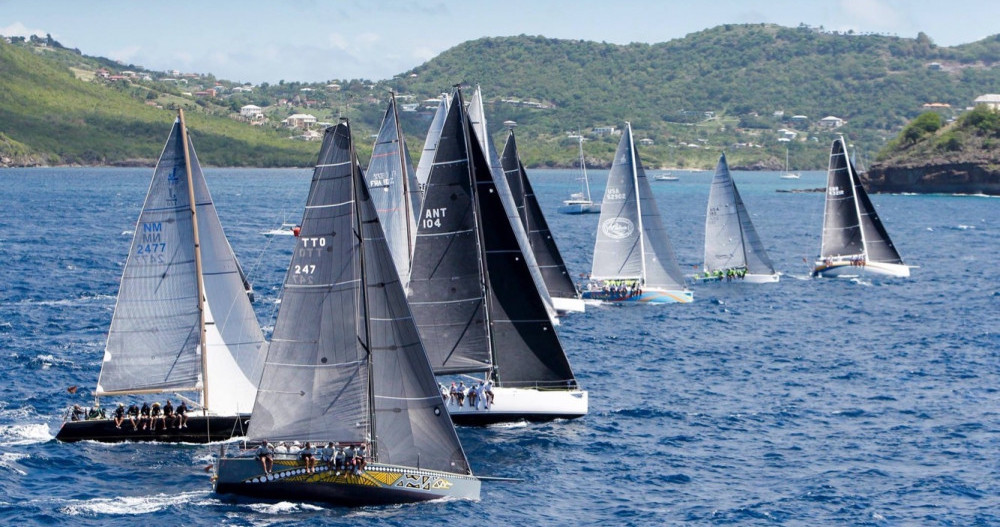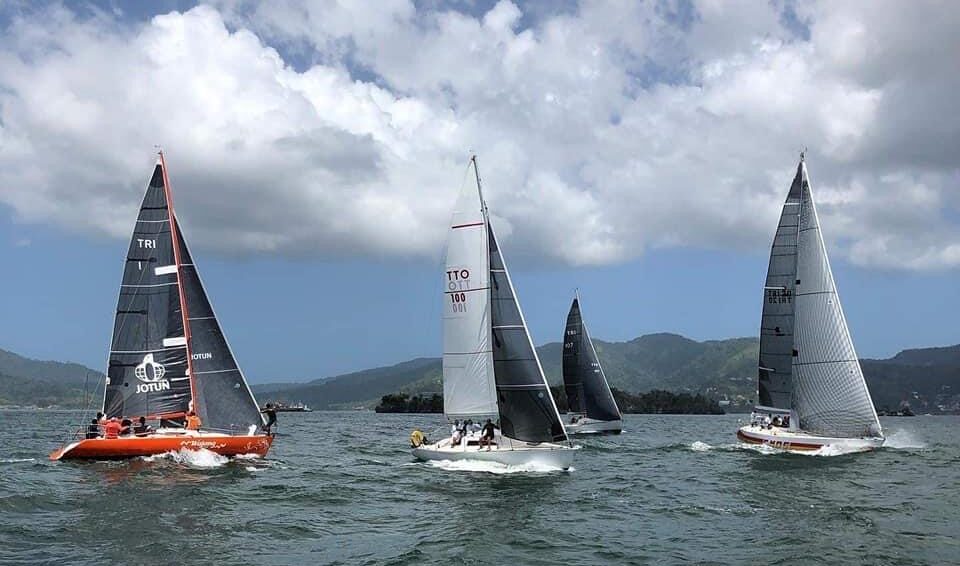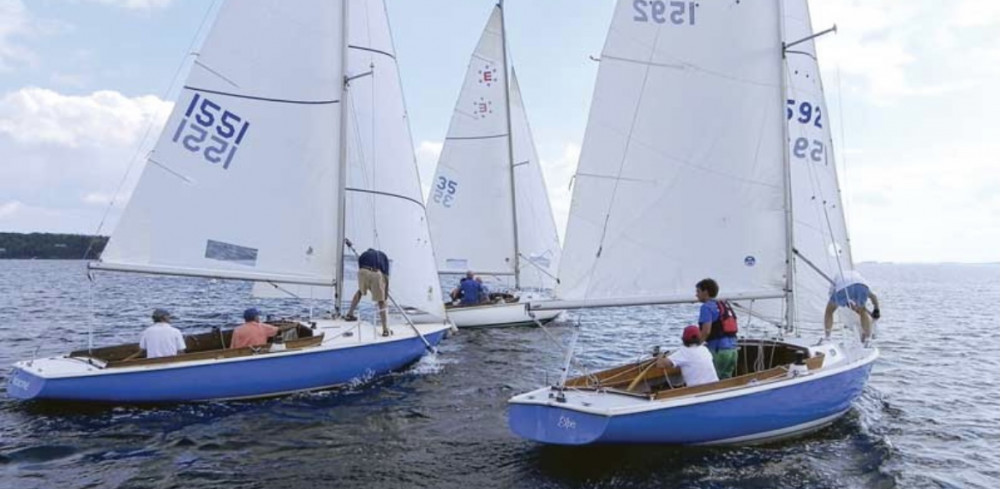 So, you’ve been bitten by the sailboat racing bug and are ready to bite the bullet. Looking to buy a race sailboat or, at least a sailboat that can be competitive. Choosing the right boat is probably the most important decision you can make. Here are a few things to keep in mind when making that decision.
So, you’ve been bitten by the sailboat racing bug and are ready to bite the bullet. Looking to buy a race sailboat or, at least a sailboat that can be competitive. Choosing the right boat is probably the most important decision you can make. Here are a few things to keep in mind when making that decision.
One Design Racing
Before getting around to the choice of boat you should decide what type of racing you plan on doing. Will it be One Design where all the boats are the same. Or, Handicap Racing, where different boats can compete together and are given a handicap to theoretically make it an even playing field.
One Design is fairly simple. It’s all the same designed boats racing against one another. The boats are all the same. Just decide which class or type of boat you want to get into and away you go. Most one design classes have a great community spirit and the sailors are very helpful, especially to newcomers. There are also many classes and boat types available.
From modern high performance boats to older, heavier displacement boats. There is something for every skill level, crew size, fitness level and age group. I’ve noticed that the competition and camaraderie in many of these classes are the same no matter what boat they sail. Whether sailing Ensigns or Melges 24’s, you can have the same amount of enjoyment no matter the speed. Just choose what’s right for you and your crew.
Handicap and Rating
In One Design racing all the boats are the same so races are decided by the order in which the boats finish. When the boats being raced are different, we have to employ a system that can rate the speed potential of the different boats. Winners of races are not necessarily in the same order as they cross the finish line. Simply put, faster boats have a higher handicap rating than slower boats. A time correction factor is applied to each boats’ elapsed time for the race in order to come up with a corrected time for the results.
There are different handicap systems in use depending on where you race in the world. These rules each have their own systems and differ a bit from one another. In order to get the right boat or optimize a boat, you should know which rule you are going to be sailing under. As you can see, this could become a very serious project that only the most serious racing programs are willing to undertake. However, there are some general things you can look at that are common to most if not all the rules.
For Handicap racing you could basically buy any boat and show up, be measured, assigned a handicap and get out racing. But, with a little more thought and research, you can get a boat with a better chance of being competitive. As we shall see, there are many other factors to consider when choosing a boat for this type of racing.
Optimizing for the Rule

All the rating systems use some combination of science, maths, observation and measurements in order to level the playing field for the different boats. With all the different variables at play in our sport of sailing, there is no one perfect system. They all have their pros and cons which is too much to get into in this blog.
One thing that they can all do well is rate similar boats. Though not one design, boats of similar era, size, appearance, displacement and sail areas are rated very well and provide really close racing. The problems start when trying to rate highly disparate boats. Like trying to rate a light planing sport boat against a heavier, displacement boat. Or, trying to rate an old racer/cruiser like a Cal 30 against a modern race boat like a TP52.
That being said, look at the composition and class allocation of the racing fleets in your area. Are the divisions split with lots of similar boats in each class? Or are there classes with many dissimilar boats? Generally, the best competition and closest racing is in the classes with similar boats.
In classes with diverse boat types, you can look at past results and conditions and see which boat type was successful. It is always possible to get an outlier boat that can clean up in the races. If you show up at your club with a boat that is different from the other boats they will try to fit you into a class. You might be the fastest in one class or the slowest in another. Either way it’s a chance you’re taking. You’ll either win a lot against dissimilar boats and be unpopular, or you’re going to lose a lot and be frustrated. It’s always more fun racing against similar competition.
Other Factors
Weather is another factor to consider. If you do most of your racing in a light air area then you probably would look for lighter displacement boats and bigger sail plans. For a heavy air location with probably bigger waves, you would look for heavier boats with smaller sails. Sail sizes would also affect your rating. In other words optimize for the conditions that are most prevalent in your area.
Sail sizes can have a great effect on your rating. Bigger sails are rated higher than smaller sails. If you buy a boat that is optimized for racing in light air and take it to a heavy air area, you will be at a disadvantage. You may have the high handicap for the big light air sails but you can hardly ever use them because the wind is too strong. In this case it would make sense to measure and rate with your smaller sails that you use more frequently. This is something that your sailmaker can advise you about.
Do you have a large pool of people to crew for you? Or do you struggle to find 3 people for a race day? Makes no sense getting a big boat with complex systems if you can’t get enough crew to sail it to it’s fullest potential. Some rules have a crew weight limitation as well that could also factor into your decisions. Choose the boat that best matches your situation.
Final Thoughts
Handicap and rating rules all try to level the playing field for all boats and so create good competition. There is a limit to what they can do. If you have 2 boats, the one with the better sails, crew and set up should always beat the other one in steady weather. No handicap system can make a badly prepared and sailed boat win over a well-prepared, well sailed boat. Sometimes luck or fluky winds can make even the slowest boat win. Again, no handicap system can cover good or bad luck with the wind.
From my experience there are always boats that rate well and others that rate poorly under certain handicap systems. The trick is to identify these boats. Avoid the ones that rate poorly and cannot sail to their rating. Try to stick to the proven boats that can perform to their handicap. If you are really smart or lucky you might even find a unicorn.
These are the rare boats that sail faster than their calculated handicap or rating. For whatever reason the measurements for the rule just can’t correctly rate them. If you can find one of those you would have hit the jackpot. I can tell you that they exist because I know one for the Caribbean or CSA Rule…but that’s a story for another time.


